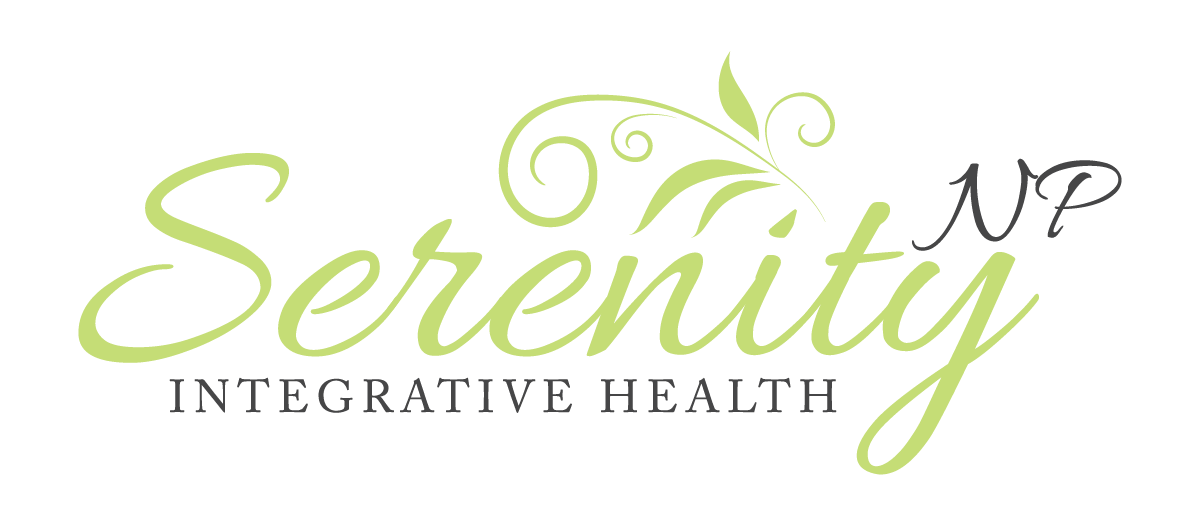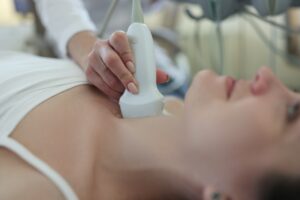Your hormonal health puzzle might be missing a key piece – iodine’s role in estrogen balance. This vital nutrient exists in every cell of your body and concentrates heavily in the endocrine glands. It plays a significant role in hormone balance.
Research reveals that insufficient iodine levels can lead to various women’s health challenges. These include polycystic ovarian syndrome (PCOS), thyroid conditions, and irregular blood sugar levels. Adults need 150-290 micrograms daily according to U.S. Recommended Dietary Allowance. Recent studies suggest higher amounts could benefit optimal health.
Let’s dive into iodine’s impact on your hormonal well-being and discover potential deficiency signs. You’ll learn about different supplementation options too. Understanding iodine’s function in your body can transform your hormonal health during reproductive years and menopause.
The Estrogen-Iodine Connection: What Science Reveals in 2025
The relationship between iodine and estrogen goes much deeper than we used to think. Research in 2025 has found fascinating connections that show why iodine for estrogen balance is the life-blood of women’s hormonal health.
How iodine regulates estrogen metabolism
Your body makes three types of estrogen, and iodine helps keep their delicate balance in check. Research shows iodine specifically helps balance estradiol (the strongest form), estriol, and estrone [1]. This balance is vital because high estradiol levels compared to estriol and progesterone can raise your risk of inflammation and breast cancer [1].
The ovaries concentrate more iodine than any other body part except the thyroid [1]. This helps explain why iodine deficiency can drastically change how ovaries produce estrogen. Women who live in iodine-deficient areas produce more estradiol [1], which can create dangerous hormonal imbalances.
Your body needs iodine to eliminate “dirty estrogens” – harmful metabolites that cause conditions like fibrocystic breasts, breast lumps, and even estrogen receptor-positive breast cancers [2].
Recent research breakthroughs on iodine’s role
Latest studies show iodine works beyond the thyroid as an antioxidant, immunomodulator, and cellular differentiator [3]. Research shows iodine protects against breast cancer by controlling estrogen balance and the MCF7 gene in breast cancer cells [4].
Scientists have found iodine boosts the transcriptional activity of estrogen receptor-α in breast cancer cells [3]. This suggests extra iodine might affect breast cancer by changing estrogen receptor signaling pathways.
All the same, moderate iodine intake seems beneficial. Population studies show people who eat more dietary iodine have lower breast cancer rates [5]. Japanese populations eat between 1200-5280 μg/day compared to only 166-209 μg/day in Western countries [5].
The dangers of estrogen dominance
Estrogen dominance happens when estrogen levels rise too high compared to progesterone, which throws hormones out of balance. Common signs include weight gain around hips and abdomen, fatigue, brain fog, headaches, and irregular periods [6].
This imbalance can stop thyroid hormone uptake, which leads to hypothyroid symptoms even without actual thyroid problems [6]. This explains why thyroid issues and estrogen dominance often show up together.
Women who experience symptoms of both estrogen dominance and thyroid dysfunction should address their iodine deficiency. Research shows proper iodine levels maintain optimal estrogen metabolism and reduce related health risks.
Identifying Iodine Deficiency: Signs Your Body Needs More
Your body needs the right amount of iodine to maintain iodine for estrogen balance. The body sends clear signals when this vital mineral runs low.
Physical symptoms to watch for
A swollen thyroid gland (goiter) stands out as the clearest sign of iodine deficiency. You’ll notice it as swelling in the front of your neck [7]. Your body doesn’t deal very well with low iodine levels, which leads to unexpected weight gain because thyroid hormones control metabolism [8]. The body also feels unusually tired, weak, and cold [9].
Low iodine levels show up in your appearance too. You might notice dry, flaky skin and thinning hair from reduced thyroid function [9]. Some people develop a slower heart rate that makes them dizzy or faint [9]. These physical signs usually develop slowly but steadily as iodine levels drop.
Emotional and cognitive indicators
Low iodine affects your mental health by a lot. Memory problems, learning issues, and poor concentration become common [9]. Studies show that proper iodine levels matter for brain development – people who lack iodine can lose up to 15 IQ points [10].
Mood changes often come with these thinking problems. People feel depressed and confused [7]. These emotional shifts can lower your work efficiency and life quality. You should check your iodine levels if you notice these symptoms along with physical changes.
How deficiency affects your menstrual cycle
Women often spot the problem through menstrual changes. Heavy bleeding shows up in 31.1% of women who lack iodine, compared to 14.5% of women with normal levels [11]. Periods become heavier or irregular [9].
Iodine plays a vital role in fertility. Women who have moderate to severe deficiency (iodine-creatine ratios below 50 μg/g) are 46% less likely to get pregnant during any menstrual cycle [12]. This makes iodine levels especially important if you’re planning to have a baby.
Studies link low iodine to conditions like PCOS and endometriosis [13]. These conditions happen in part because of hormone imbalances that proper iodine levels help prevent.
Iodine Needs Through Different Life Stages
Your body needs different amounts of iodine as you age. Each life stage needs specific attention to iodine for estrogen balance.
Reproductive years: balancing hormones naturally
Women in their reproductive years need about 150 mcg of iodine daily to keep their thyroid and ovarian function healthy. This amount jumps to 220-250 mcg during pregnancy to help with fetal brain development and prevent complications. Breastfeeding mothers need even more – 250-290 mcg daily – since iodine passes to babies through breast milk.
Women who get enough iodine before trying to conceive have better chances of getting pregnant each cycle. The numbers show that women with moderate to severe deficiency are 46% less likely to conceive. Getting enough iodine several months before trying to get pregnant helps build up thyroid iodine stores.
Perimenopause: using iodine to ease the transition
Many women become borderline hypothyroid during perimenopause, which leads to weight gain, fatigue, and joint pain. Taking iodine supplements during this time helps the thyroid work better as hormones change.
The right amount of iodine helps your thyroid adapt to changing estrogen levels and might reduce perimenopause symptoms. Research in this area is still new, but a healthy thyroid is vital during this hormonal transformation.
Menopause and beyond: maintaining health benefits of iodine
Iodine remains important after menopause, beyond just reproductive health. Studies show that postmenopausal women’s iodine levels relate to how often they get hot flashes and how long these last. Women with more iodine in their urine get fewer and shorter hot flashes.
Higher iodine levels after menopause also mean better heart health markers. Research shows that women with more iodine in their urine have lower levels of concerning fats like LDL cholesterol and triglycerides.
Our thyroid’s ability to absorb iodine drops as we age. By 80, the thyroid takes in 40% less iodine compared to age 30. Watching your dietary iodine becomes more important with age, but be careful not to overdo supplements. Too much iodine can make existing thyroid problems worse in older women.
Practical Guide to Iodine Supplementation for Women
You need to think over several things when choosing the right iodine supplement. Research shows that proper supplements can help a lot with iodine for estrogen balance throughout a woman’s life.
Types of iodine supplements and their differences
Iodine supplements mainly come in two forms: potassium iodide and sodium iodide [14]. These forms have better bioavailability than other types. Kelp supplements are another option that naturally has iodine, though amounts can vary [14]. Many multivitamin/mineral supplements have iodine too, usually around 150 mcg [15]. Only about half of prenatal supplements contain this vital mineral [16].
Finding your optimal dosage
Most adults need about 150 micrograms of iodine each day [7]. This amount changes based on life stages. Pregnant or breastfeeding women need 250 micrograms daily [15], with potassium iodide being the preferred form [3]. The American Thyroid Association suggests women who plan to get pregnant should take a daily supplement with 150 μg of potassium iodide three months before conception [3].
Taking more than 1,100 micrograms daily can be harmful [4]. Rather than deciding on your own, you should ask a healthcare provider about the right dosage for your needs.
Supporting nutrients that improve iodine absorption
Your body uses iodine better when you take it with certain other nutrients. Iodized salt gives you about 71 mcg of iodine in just 1/4 teaspoon (47% of daily recommended intake) [17].
Potential side effects and who should avoid supplements
Too much iodine can cause symptoms like iodine deficiency, including enlarged thyroid, fatigue, and weight gain [14]. You might also experience:
- Upset stomach and stomach pain
- Nausea or vomiting
- Diarrhea
- Burning sensations in throat and mouth [4]
Women with existing thyroid conditions must get medical supervision before taking iodine supplements [18]. This rule applies especially to those with hyperthyroidism or autoimmune thyroid disorders, since iodine supplements could make their condition worse instead of providing health benefits of iodine [19].
Conclusion
Learning about iodine’s role in estrogen balance is the most important step to better hormonal health. Research shows that proper iodine levels help prevent estrogen dominance, support thyroid function, and protect reproductive health at every life stage.
Supplementation is a practical solution for many women, but you need to be careful about dosage. Women typically need 150 micrograms daily, though this changes during pregnancy and menopause. Your healthcare provider can help determine the right amount based on your individual needs and health conditions.
Iodine’s connection to women’s health goes beyond simple nutrition. This mineral helps maintain hormone balance, supports fertility, and protects against health challenges of all types. You can achieve optimal hormonal health through proper supplementation and by paying attention to your body’s signals.
Iodine supplementation works differently for each person. A woman’s needs vary based on her age, life stage, and overall health. The safest way to get iodine’s full benefits for hormonal balance is to start with small doses and increase them gradually under medical supervision.
References
[1] – https://www.healthandscience.eu/en/archive/article-archive/2303-the-estrogen-balance-depends-on-iodine-vitamin-d-magnesium-and-selenium
[2] – https://hormonesbalance.com/articles/iodines-role-in-hormone-balance/
[3] – https://lpi.oregonstate.edu/mic/minerals/iodine
[4] – https://www.webmd.com/vitamins-and-supplements/iodine-uses-and-risks
[5] – https://www.mdpi.com/1422-0067/22/3/1228
[6] – https://www.mariongluckclinic.com/blog/estrogen-dominance-hypothyroidism.html
[7] – https://my.clevelandclinic.org/health/diseases/23417-iodine-deficiency
[8] – https://www.medicalnewstoday.com/articles/320891
[9] – https://www.healthline.com/nutrition/iodine-deficiency-symptoms
[10] – https://www.who.int/news-room/questions-and-answers/item/nutrition-effects-of-iodine-deficiency
[11] – https://pubmed.ncbi.nlm.nih.gov/16782093/
[12] – https://jamanetwork.com/journals/jama/fullarticle/2673527
[13] – https://doctorseaweed.com/blogs/news/how-can-iodine-deficiency-cause-irregular-periods?srsltid=AfmBOork9bKU_aJS9OfhPsni7C8bOHgkCPYH1icDQgkyoAOv_G7KWG0q
[14] – https://www.healthline.com/nutrition/best-iodine-supplement
[15] – https://ods.od.nih.gov/factsheets/Iodine-HealthProfessional/
[16] – https://ods.od.nih.gov/factsheets/Iodine-Consumer/
[17] – https://www.healthline.com/nutrition/iodine-rich-foods
[18] – https://www.betterhealth.vic.gov.au/health/healthyliving/iodine
[19] – https://www.healthdirect.gov.au/iodine





